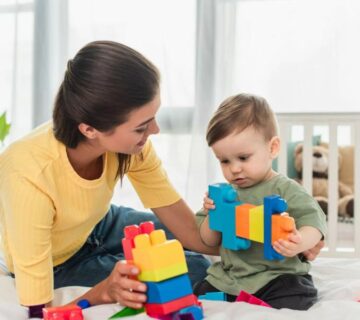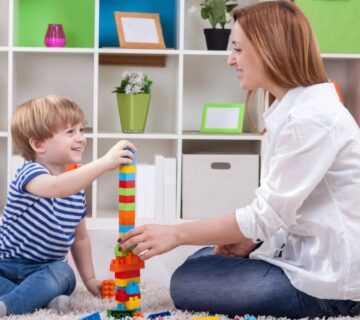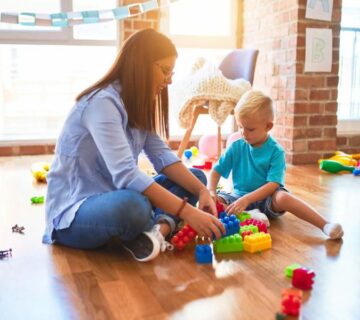Super Bowl 2025: Expert-Backed Sensory-Friendly Tips for Autistic Children
The Super Bowl brings high-energy excitement and cheering fans together. Simple sensory-friendly viewing tips can make this event better for children with autism. These children’s heightened sensitivities can make them feel overwhelmed by loud noises, sudden changes, and crowded spaces during Super Bowl celebrations.
A sensory-friendly experience doesn’t take away from the fun. Simple preparations can reshape the scene of Super Bowl viewing. Quiet spaces, noise-canceling headphones, and nearby comfort items make a real difference. Our complete guide shows you how to build a sensory toolkit that works and create visual schedules. These tools help your child understand what to expect, and everyone can enjoy this cherished sporting event in comfort.
Also Read: What is ABA Therapy? A Comprehensive Guide to Autism Therapy and Treatment in Atlanta
Experts Reveal Key Pre-Game Preparation Strategies
The right preparation strategies can make a huge difference in how autistic children experience the Super Bowl. Behavioral specialists and occupational therapists recommend starting preparations several weeks before the event.
How to Create Visual Schedules That Work
Visual schedules help children understand and look forward to game day activities. These schedules should include pictures of football games, commercials, and break times. Social stories combined with visual aids make it easier for children to understand what happens during different parts of the event.
Parents should break the schedule into clear, manageable segments to make it work better. The focus should be on the most important moments like game start times, meal breaks, and expected end times. On top of that, it helps to add pictures of comfort items and quiet spaces so children know about their coping options.
When to Start Preparing Your Child
Start preparing at least two weeks before the Super Bowl. Set aside time each day to talk about the upcoming event with your child. Here’s a well-laid-out approach:
- Daily discussions about game expectations
- Practice sessions with shorter games or highlight reels
- Gradual introduction to game-related sounds and activities
- Regular review of visual schedules
Occupational therapists suggest watching recorded games ahead of time so children get used to the atmosphere. This lets children practice their coping strategies in a controlled environment. These practice sessions also help you spot potential triggers and adjust support plans.
Create a quiet area where children can go if they feel overwhelmed. This space needs familiar comfort items, sensory toys, and noise-canceling equipment to give children a safe space during intense moments of the game.
Also Read: How to Create a Supportive Home Environment for ABA Therapy: A Comprehensive Guide
Technology Transforms Super Bowl Experience
Technology now provides innovative solutions to create sensory-friendly Super Bowl experiences. New viewers benefit from these digital advances that boost their comfort and control.
Smart Home Devices Control Sensory Environment
Smart home technology changes viewing spaces into customized sensory zones. These systems let you control lighting intensity and color temperature to create a soothing atmosphere that reduces anxiety. The automated audio system plays calming sounds or white noise to minimize overwhelming auditory stimuli. Smart thermostats keep temperatures stable, so you can prevent sensory overload that often causes stress.
Apps Help Track Sensory Overload Levels
Digital applications are vital tools that monitor sensory responses. Parents track their children’s comfort levels with specialized apps featuring speech-to-text messaging. These apps send immediate alerts about potential sensory overload situations and help make quick environment adjustments.
Virtual Reality Creates Safe Practice Sessions
VR technology has become a powerful tool that prepares autistic children for game day experiences. Research shows VR training protocols help children express and regulate emotions better. Children develop vital skills through VR simulations in a controlled environment that reduces anxiety from real-life interactions.
The benefits of VR training include:
- Enhanced conversational abilities
- Improved problem-solving skills
- Strengthened communication capabilities
Studies published in Computers in Human Behavior show VR substantially improves social cognitive skills through interactive, stimulating, and socially non-threatening approaches. The results demonstrate remarkable improvement in social skills after VR-based training sessions.
Also Read: How Many ABA Therapy Hours Are Needed? A Guide for Families in Atlanta
Parents Share Success Stories
Families across the country show how good planning creates positive Super Bowl experiences for autistic children. The Eagles Autism Foundation reports helping hundreds of neurodiverse fans enjoy the Super Bowl Experience through well-designed support systems.
How One Family Created Their Game-Day Command Center
Many families have found success by turning their homes into structured viewing environments instead of watching the Super Bowl traditionally. A family’s approach stands out because they created a complete game-day command center. They set up specific zones and focused on a quiet retreat space with noise-canceling headphones and weighted blankets.
The family added comfort items like sensory toys and favorite books that stayed within easy reach throughout the event. Their command center had adjustable lighting and temperature controls to maintain ideal sensory conditions.
The Indianapolis Colts’ stadium model has inspired many families to create professional setups at home. Parents now use picture menus for snacks and create breakout spaces that bring stadium-quality accommodations right into their living rooms.
Safety remains the biggest concern. Families feel more confident about attending events after adding tracking solutions and setting clear communication protocols. These changes help children join game-day celebrations while staying comfortable.
The success stories show families celebrating victories big and small – from watching complete game segments to using sensory toolkits effectively. These achievements prove that autistic children can join Super Bowl festivities meaningfully when they have proper preparation and support.
Also Read: Home-Based vs. Center-Based ABA Therapy in Atlanta: A Comprehensive Guide to Making the Right Choice
Professional Support Teams Guide Families
Professional support teams help families prepare for Super Bowl viewing nationwide. The Eagles Autism Foundation works with leading medical institutions to provide detailed support services for autistic children.
Occupational Therapists Design Custom Plans
Occupational therapists create football-themed therapy sessions that adapt to each child’s specific needs. These specialists develop customized strategies to focus on sensory integration and motor skills development. Therapists work with families to build structured environments that help children participate in game-day activities.
Professional support has:
- Custom-designed sensory rooms staffed by certified specialists
- Football-themed therapeutic activities
- Customized coping strategy development
- Environmental modification guidance
Behavioral Specialists Monitor Progress
Behavioral specialists from InBloom Autism Services stay in designated sensory areas throughout the event. They actively monitor children’s responses and adjust support strategies when needed. This allows them to handle any challenges that come up during the game.
The NFL’s partnership with KultureCity has improved professional support services at State Farm Stadium. Through collaboration with certified behavioral professionals, families can get help throughout the game. The Eagles Autism Foundation makes this support network even stronger by training staff members who work in sensory-inclusive spaces.
These professional teams see amazing progress in children who take part in large-scale events. Families receive expert strategies to create positive Super Bowl experiences. Combining occupational therapy and behavioral support creates new ways to make game-day celebrations inclusive for everyone.
Conclusion
Smart preparation and expert-backed strategies make Super Bowl celebrations welcoming for everyone. Families can now access detailed tools that make game day fun for autistic children. These include visual schedules and smart home technology. Many success stories show how quiet spaces, sensory toolkits, and expert guidance create good experiences for all.
Virtual reality training and sensory monitoring apps help children develop vital coping skills. Support teams work with occupational therapists and behavioral specialists to guide families through their Super Bowl experience. What used to be an overwhelming event has become a chance for real family bonding and participation.
Parents see big improvements in how their children take part in Super Bowl festivities when they use these strategies. Families should begin preparations early and stay in touch with support professionals. The right sensory-friendly practices show that every child can enjoy Super Bowl celebrations in their own way.
FAQs
Q1. How can I prepare my autistic child for the Super Bowl experience?
Start preparations at least two weeks before the event. Create visual schedules with pictures of game activities, discuss expectations daily, and practice with shorter games or highlight reels. Gradually introduce game-related sounds and activities, and set up a quiet area with comfort items.
Q2. What role does technology play in creating a sensory-friendly Super Bowl experience?
Technology plays a crucial role. Smart home devices can control lighting, sound, and temperature to create a soothing environment. Apps help track sensory overload levels, while virtual reality can be used for safe practice sessions to improve social skills and reduce anxiety.
Q3. How can I set up a “game-day command center” at home for my autistic child?
Create designated zones in your home, including a quiet retreat space with noise-canceling headphones and weighted blankets. Incorporate comfort items like sensory toys and favorite books. Use adjustable lighting and temperature controls, and consider creating picture menus for snacks to replicate stadium-level accommodations.
Q4. What professional support is available for families with autistic children during the Super Bowl?
Occupational therapists can design custom plans with football-themed therapy sessions and personalized coping strategies. Behavioral specialists often monitor progress in designated sensory areas. Some stadiums have certified professionals available throughout the game to offer real-time assistance to families.
Q5. How can visual schedules help autistic children during the Super Bowl?
Visual schedules are crucial tools that help children understand and anticipate game day activities. They should include pictures of football games, commercials, and break times. Breaking down the schedule into clear, manageable segments and incorporating social stories can help children process what to expect during different parts of the event.





